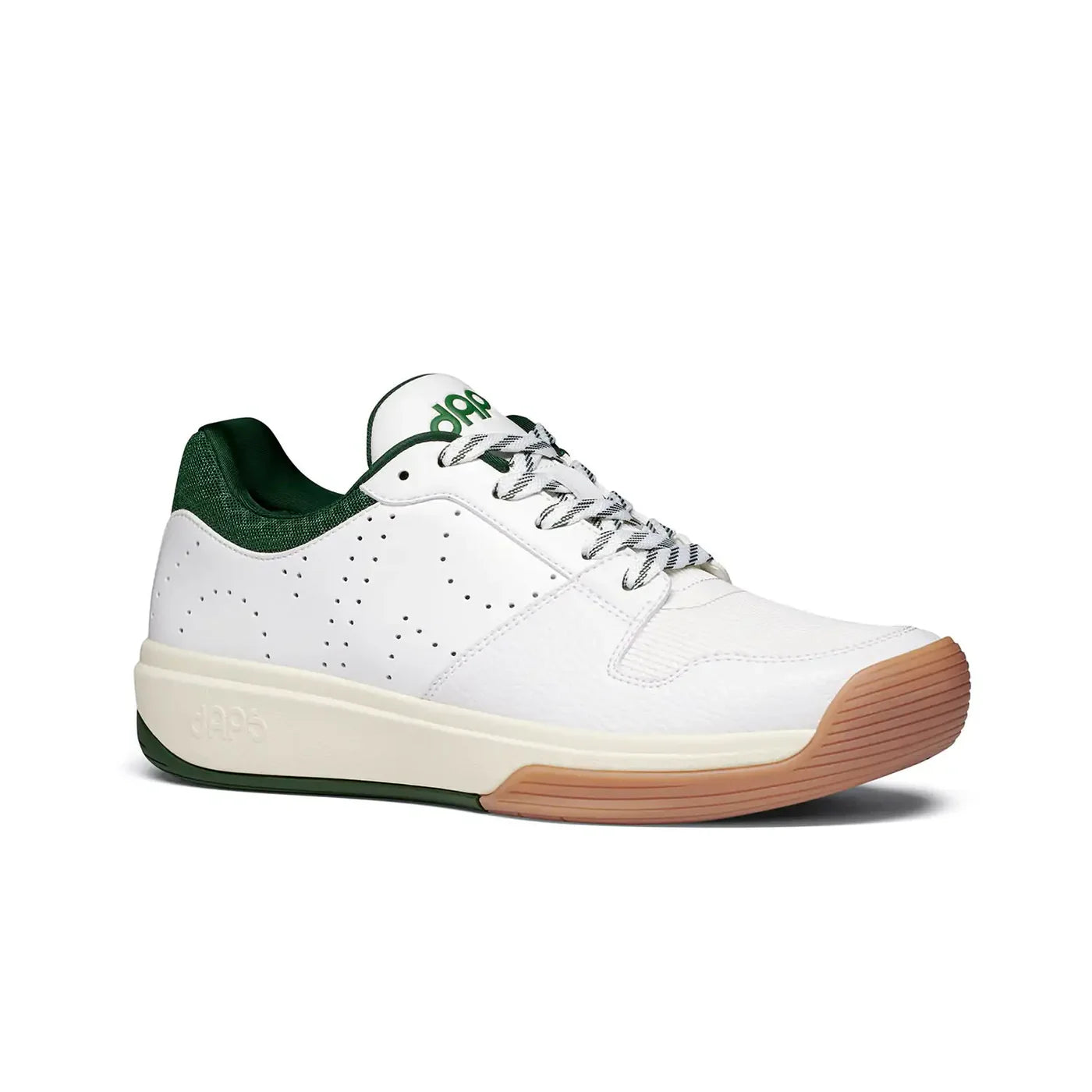What pickleball players can learn from table tennis
Last Edited
Mar 13 2025
Category
News
Pickleball and table tennis may seem like distant cousins—one played on a small table, the other on a larger court—but if you’ve ever watched an elite table tennis player step onto a pickleball court, you know the transition can be scarily smooth. The fast hands. The wicked spin. The ability to read opponents and shape points.
Players like Patricio Pereira (2300-rated in table tennis) and Clifford Joseph have shown just how seamlessly skills transfer from the ping pong table to the pickleball court. But even if you’ve never played competitive table tennis, there’s a lot you can steal from the sport to level up your pickleball game.
Let’s break down the biggest takeaways from table tennis that can make you a sharper, faster, and more deceptive pickleball player...courtesy of Matthew Hetherington, table tennis coach and marketing specialist at JOOLA:
1. Wrist control: the secret to adding snap, spin, & misdirection
In table tennis, the wrist is everything. Top players manipulate their shots with subtle flicks and snaps, generating spin and deception that leave opponents guessing.
This wrist dexterity directly applies to pickleball, especially in:
- Backhand rolls – Think of the soft but aggressive spin-heavy roll shots used at the kitchen.
- Snap volleys – Quick wrist action adds speed and unpredictability at the net.
- Inside-out and fading shots – Subtle wrist angles can disguise direction and throw off opponents.
If your dinks and volleys feel predictable, start loosening up your wrist and adding slight variations—table tennis players have been doing it for decades.
2. Reflex training: fast hands win hands battles
Table tennis players operate in fast-twitch chaos, reacting to 60 mph shots on a tiny table. This reaction speed transfers perfectly to kitchen firefights, where paddle quickness often decides the winner.
Why does this matter for pickleball?
Faster volley exchanges – The ability to react in milliseconds helps win hands battles.
Tighter resets – Quick adjustments on the fly keep points alive.
Better anticipation – Ping pong players instinctively read angles and prepare early.
If you want faster hands at the kitchen, train like a table tennis player—short-distance reaction drills and paddle speed exercises will pay off.
3. Spin mastery: the hidden advantage at the kitchen
Table tennis players live and die by spin. They generate insane topspin, backspin, and sidespin variations—all of which are hugely underutilized in pickleball.
Here’s how table tennis spin skills translate to pickleball:
- Heavy slice dinks – Lower-bouncing, skidding dinks force opponents to hit up.
- Topspin rolls – Adding topspin keeps attackable shots dipping quickly.
- Deceptive fades and inside-out shots – Side spin can make dinks and resets unpredictable.
- If you’re only hitting flat dinks, drives, and drops, you’re leaving easy points on the table.
- Learning to manipulate the ball—like a table tennis player—gives you an edge over players who only hit basic shots.
4. Forehand & backhand transitions
One of the biggest struggles for new pickleball players? Switching between forehand and backhand efficiently. Table tennis players, on the other hand, are masters of seamless transitions.
What does this mean for your game?
Faster resets – Transitioning smoothly between forehand and backhand improves defense.
More controlled roll volleys – The ability to flip between backhand rolls and forehand flicks keeps opponents guessing.
Better shot consistency – The compact, efficient strokes from table tennis help in fast exchanges.
If you find yourself late on backhand volleys or slow to transition in hands battles, studying how table tennis players stay compact and fluid will improve your reaction time.
5. Point construction: the chess match of dinking wars
Table tennis isn’t just about slamming winners—it’s a strategy-based sport where players set up points several shots in advance. Pickleball, especially at the highest levels, works the same way.
What can you learn from table tennis strategy?
Setting up dinking patterns – Instead of just keeping the ball in play, use angles, depth, and speed variations to build a point.
Reading opponents early – Table tennis players excel at predicting shot tendencies—something every pickleball player should develop.
Controlling tempo – Switching between soft shots and sudden speed-ups creates uncertainty for opponents.
The best pickleball players don’t just dink for the sake of dinking—they construct points like table tennis players, forcing mistakes and opening up attackable shots.
Where table tennis players struggle in pickleball
It’s not all smooth sailing for table tennis players moving to pickleball. Here’s where they struggle most:
Overheads – Table tennis lacks much of an overhead game, so ex-ping pong players often have weak overhead smashes.
Outball Awareness – In table tennis, every ball is in play unless it hits the net. This means table tennis players tend to hit everything—even balls that would’ve gone out.
Larger Court Movement – Table tennis requires quick foot adjustments but in a small space. Adjusting to pickleball’s longer lateral movements takes time.
Understanding these weaknesses can help both former table tennis players adapt faster and current pickleball players exploit their opponents' tendencies.
Read next: How to move with your partner in doubles pickleball













